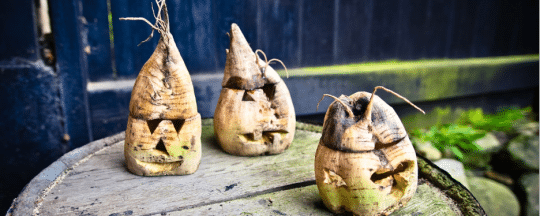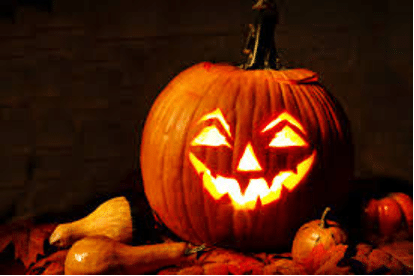It’s dark out. The wind blows through the branches, bringing a chill that isn’t necessarily due to the temperature. Suddenly you find yourself hyper aware of every sound around you, and you start as you realize you see a pair of eyes glowing at you…until you realize it’s a jack-o-lantern. Happy Halloween, indeed.
You may be wonder how jack-o-lanterns became so popular, or why we carve them out of pumpkins. To know the origins of jack-o-lanterns, we have to go all the way back across the Atlantic to the fens, or marshes, of rural Ireland. In the early 1600’s, the legend of a shadowy figure began to arise known as Stingy Jack (Jack the Smith, Drunk Jack, Flakey Jack, and other names are also in the folklore and can be used interchangeably).
The most popular version of the tale involves Jack first tricking the Devil into changing his form, then trapping him in his transfigured state. Jack then offered the Devil out of the deal in exchange for not taking his soul for a long time. Some longer versions of the story have the Devil being tricked 3 or 4 different times.
Eventually though, time caught up with Jack and he was unable to trick the Devil again. Stingy Jack was sentenced to roam the Earth for all eternity with nothing but an ember given to him by the Devil to light his way.
There is also other folklore from this time surrounding what’s known as ignis fatuus, or false fire. False fire is an actual occurrence— scientifically, ignis fatuss, is known as marsh gas and occurs during the spontaneous ignition of methane created by decaying plant matter in marshes or swampy areas. These two legends began to intertwine—when many people in the moors of the British Isles saw the naturally occurring marsh gas, they attributed to Stingy Jack.

Many people in those areas also continued the Gaelic celebration of Samhain, with its rituals of going from house to house in search of food and drink (these are the origins Trick or Treating). As it was naturally dark in pre-industrial revolution Ireland, many would carve turnips, potatoes or other root vegetables and add coals or candles to create makeshift lanterns to help guide those celebrating. Occasionally these would be carved with faces, a tradition that continues to this day in Britain and Ireland.
The waves of immigrants created by the Great Potato Famine of the 1840’s. As with most immigrants also had a role in traditional jack-o-lanterns. They arrived in America to celebrate Halloween and were able to find a very particular new world crop that was much larger and easier to carve than their root vegetables of home; the winter squash, the most famous of which is a pumpkin. (There are also several French recipes for a pumpkin soup that suggest carving pumpkins for decoration as early as the 1760’s).
Pumpkins themselves were introduced by the Indigenous Peoples to Europeans as early as the 1600’s, when tales of Jack first began to be told. Several cultures mixed together in celebration of Halloween, creating the iconic pumpkin faces we still know today.

Andrew Huntley is a Gallery Experience Presenter in CMNH’s Lifelong Learning Department. Museum staff, volunteers, and interns are encouraged to blog about their unique experiences and knowledge gained from working at the museum.
Related Content
Jack-o’-Lantern Chromatography
Is This What They Call Overkill? Toxin and Venom in the Herp World
